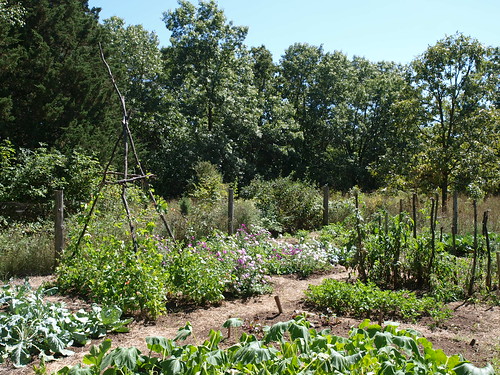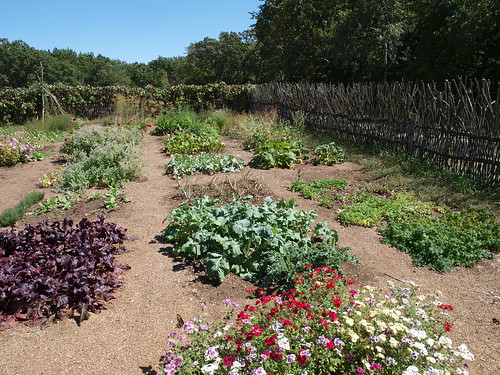I love gardens. All kinds of gardens. Flower gardens, community gardens, Japanese gardens. And a recent visit to Old World Wisconsin sparked an interest in yet another type of garden – the heirloom garden.
It was a perfect summer’s day when I went exploring a few weeks ago. Old World is a great place to go when you want to both get in a little outdoor exercise and visit a museum. Though there is tram service to the various areas, I chose to walk the paths and managed to add nearly 4 miles to my pocket pedometer. And I discovered my favorite parts were outside, too – the thirteen heirloom gardens that sported colorful flowers and vegetables, and looked like paintings right out of the 19th Century. All of the gardens in the museum are typical of those found in the historical period from the 1850s through the 1890s.
Heirloom gardens use only plants that are cultivars that were commonly grown before large scale agricultural practices were introduced. These vegetable plants have kept their traits through open-pollination and the fruits are propagated by grafts and cuttings. These varieties are becoming less prevalent because plants are now chosen for their consistency, their hardiness to tolerate shipping and storage, and their tolerance to drought or pests. Though these qualities are desirable when growing food is a huge agri-business, these plants are not the best nutritionally nor do they taste the finest.
The gardeners at Old World also use farming techniques from the time period. If it wasn’t done in the late 19th century, it isn’t done in these plots either.
In the last decade, the heirloom gardening movement has been increasing. The gardens at Old World Wisconsin provide some mighty incentive. The vegetables and fruits I sampled tasted great.








